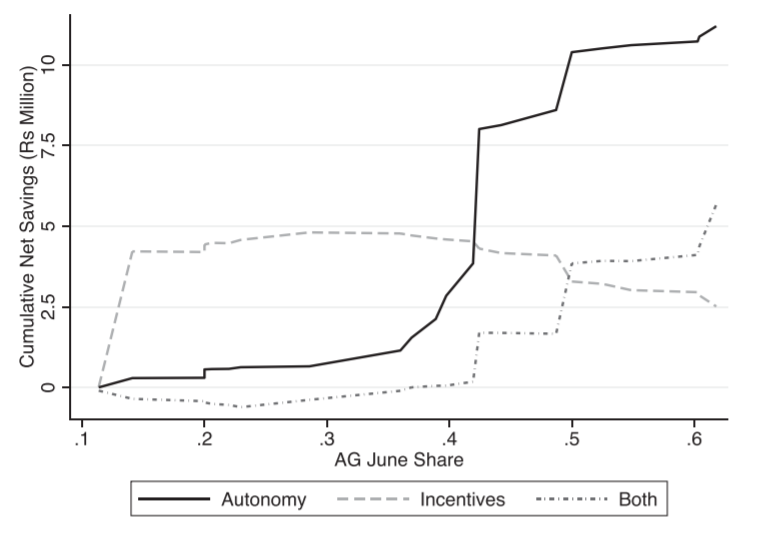What we’ve been reading about rules and discretion in public procurement

Photo by Yan Krukov from Pexels
The OECD estimates that in 2020, governments in 27 countries for which data is available spent an average of 14 percent of their GDP on public procurement of goods and services, out of 28 percent of the total government expenditures. Given the sheer size of public procurement, improving it has an immense potential to generate fiscal savings, improve government-provided services, and promote inclusive and sustainable economic growth.
However, making reforms comes with its fair share of challenges. In a seminal paper, Bandiera et al. (2009) studied the determinants of the cost of inefficient public procurement in Italy. Their analysis indicated that passive waste – i.e. waste in cases of inefficiency due to lack of competencies or inappropriate use of discretion, low incentives, regulatory burden, or general mismanagement of public offices – accounted for at least 82 percent of the estimated waste associated with government procurement.
Building on our previous literature review on public procurement, in this blog we discuss some recent empirical evidence on factors that contribute to passive waste, in particular the influence of rules and discretion on procurement decision-making and outcomes.
Effects of increased discretion vary across different stages of the procurement process and depend on the causes of the existing inefficiencies and integrity risks.
Procurement officers are part of complex bureaucracies, with various layers of internal control from managers, as well as external control from auditors. The impact of awarding more discretion to procurement officers depends on which stage of the decision-making process is most affected by inefficiencies and integrity risks in the status quo. A recent study by Bandiera et al. (2021) considers the discretion of procurement officers at the stage of vendors payment, specifically their autonomy vis-à-vis monitors from the Accountant General office – the independent agency in charge of pre-audit approval of payments submitted by procurement officers to vendors.
In collaboration with the government of Punjab, Pakistan, in 2014, the authors implemented an experiment that randomly allocated 600 procurement officers to four groups: a control group, an autonomy group, a pay for performance (incentive) group, and a group that gets both the autonomy and the incentive treatment. The autonomy treatment shifted decision making rights on payments approvals from the Accountant General to the procurement officers. The incentive treatment was a rank order tournament which awarded prizes ranging from half a month’s salary to two months’ salary based on value for money from procurement.
The study finds that the shift in decision rights from monitors to procurement officers reduced prices by 9 percent without reducing quality, but the introduction of the incentive scheme had no impact on value for money. The autonomy treatment led to higher savings than the incentive treatment especially at high levels of misalignment between procurement officers and the monitors from the Accountant General’s office (see Figure). These results indicate that, at baseline, the Accountant General’s requests for payment approvals were too stringent and created inefficiencies in the procurement process, and this explains why only the intervention that addressed this power imbalance was effective.

Source: Bandiera et al. (2021)
Note: “AG June Share” represents the fraction of purchases approved by the Accountant General’s office (AG) in June, the last month of the fiscal year, and therefore it is a proxy of the misalignment between the contracting entity and the AG office. The “Cumulative net savings” is the estimated total savings by all districts calculated using the estimated treatment effects of each treatment.
The right balance between rules and discretion depends on the competences of public officials and public sector capacity.
There is abundant evidence, across different countries and contexts, that there is large variation in efficiency across procuring entities. For example, a study by Best et al. (2017) examines data on 16 million public procurement purchases in Russia during 2011–2016 and finds that over 40 percent of the variation in quality-adjusted prices is due to the individual bureaucrats and organizations that manage procurement processes. Given large variation in efficiencies across procuring entities, it is not surprising that rules and discretions have a different impact depending on the capacity and competences within each procuring entity. For example, in Russia, a common procurement policy and bid preferences for domestic suppliers dramatically improves performance, but only when implemented by ineffective bureaucrats (Best et al., 2017). Similarly, in Italy, less efficient procuring entities experience larger efficiency gains from centralized procurement (Bucciol et al., 2020), and indeed they use this option more extensively, when available (Bandiera et al., 2009).
An important takeaway from this research is that discretion in public procurement extends beyond the choice of procurement method, involves a variety of different actors, and should be studied across other stages of the procurement process. Awarding discretion in a complex procurement system may have different effects depending on where inefficiencies and corruption risks lie and on the existing capacity across procuring entities. While future research can study the autonomy of public officials in relations with their interaction with the firms in the market and the integrity of the evaluation process, the papers discussed in this blog provide excellent examples on how empirical methods and experiments can be used to advance our knowledge on public procurement.
